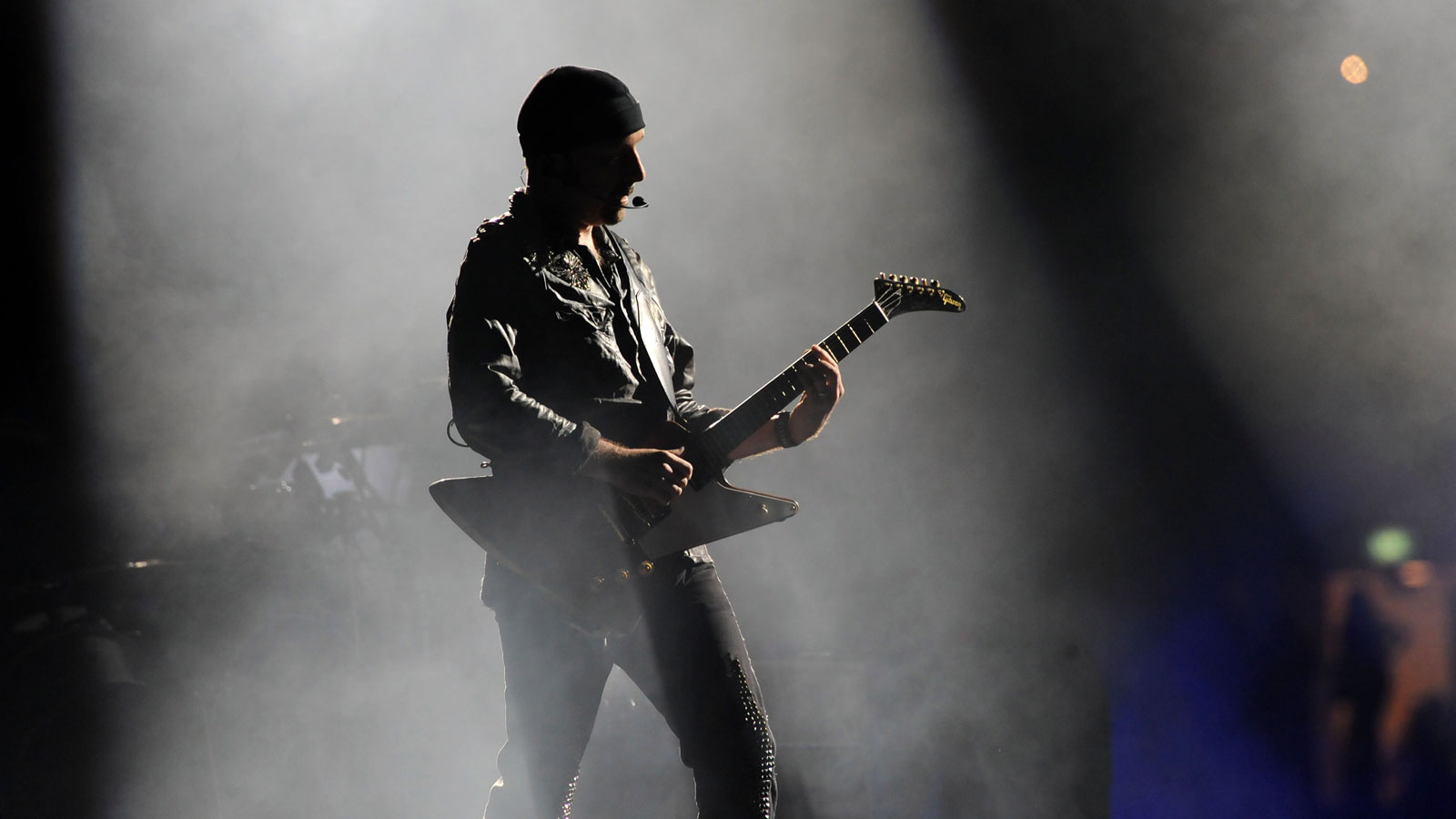5 ways to play like The Edge
Master the U2 soundscaper's approaches to rhythm and effects – with tab and downloadable audio tracks

With a frightening array of effects pedals in his arsenal, The Edge has helped redefine the sonic limits of what an electric guitar can do with his work in U2.
"It's not all about delicate delays, however - The Edge's rockier side is featured in tracks such as Desire and Vertigo"
His signature dotted eighth note delay arpeggios can be heard in classic tracks such as I Still Haven't Found What I'm Looking For and Where The Streets Have No Name, and less prominently in the likes of I'll Go Crazy If I Don't Go Crazy Tonight and Bad.
Faster 16th note diad riffs are typical in songs such as Iris (Hold Me Close) and Until The End Of The World.
It's not all about delicate delays, however - The Edge's rockier side is featured in tracks such as Desire and Vertigo, where his blues influences are a little more obvious.
1. Dotted eighth note delay
This is a classic Edge delay sound. The trick is to play constant eighth notes while your delay pedal generates 16th notes in between the eighths, giving you that 'chukka chukka' rhythm. Set your pedal to about 430ms to match up with the 105bpm tempo.
Dotted eighth note delay tab (right-click to download)
Dotted eighth note delay audio (right-click to download)
2. 16th note strumming
This riff is in much the same vein as Pride (In The Name Of Love). We've opted for two-note chords rather than full shapes - a typical Edge approach that surprisingly, sounds fuller than you may think. Keep your pick hand moving in a constant 16th note 'down-up' motion.
Want all the hottest music and gear news, reviews, deals, features and more, direct to your inbox? Sign up here.
16th note strumming tab (right-click to download)
16th note strumming audio (right-click to download)
3. Overdriven delayed arpeggios
You need overdrive for these signature Edge-style arpeggios, but there's a fine line between biting attack and mushy distortion. We advise a less is more approach.
Overdriven delayed arpeggios tab (right-click to download)
Overdriven delayed arpeggios audio (right-click to download)
4. Heavy powerchord riff
This riff is based around an E blues scale idea (E G A Bb B D) that you'd normally play on single strings. Fuzz and full powerchord shapes make it sound huge.
Heavy powerchord riff tab (right-click to download)
Heavy powerchord riff audio (right-click to download)
5. Syncopated octaver riff
Adding an octave up note (courtesy of a Whammy or similar octaver/pitch shifter pedal) gives you a similar sound to the one that Edge used in the Achtung Baby era.
Although the rhythm here is simple enough, the exact timing of the notes can be somewhat tricky so try to tap your foot along to the music to help you keep time.
Syncopated octaver riff tab (right-click to download)
Syncopated octaver riff audio (right-click to download)




